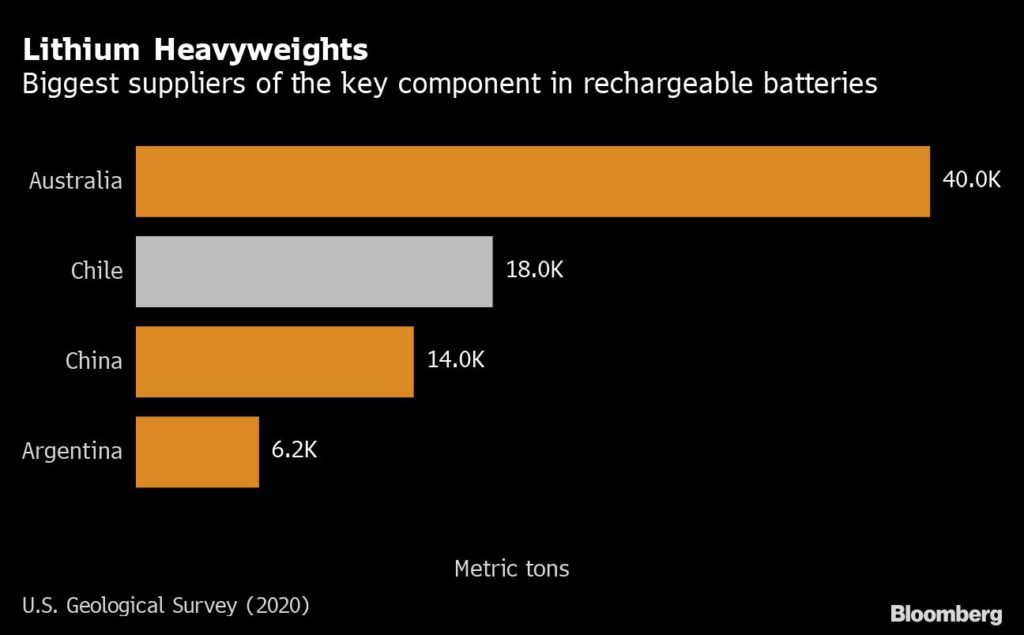
Shares in Lithium Americas (TSX, NYSE: LAC) soared on Tuesday morning after it announced that General Motors (NYSE: GM) will invest $650 million in the company to help it develop the Thacker Pass lithium mine in northern Nevada.![]()
The Canadian miner’s stock was up 10% in premarket trading in New York after it unveiled GM’s investment, which the companies say represents the largest-ever investment by an automaker to produce battery raw materials.
Lithium carbonate from Thacker Pass, the largest known lithium source in the US, will be used in GM’s proprietary Ultium battery cell.
“Direct sourcing critical EV raw materials and components from suppliers in North America and free-trade-agreement countries helps make our supply chain more secure, helps us manage cell costs, and creates jobs,” GM Chief Executive Mary Barra in a separate statement.
“The agreement with GM is a major milestone in moving Thacker Pass toward production, while setting a foundation for the separation of our U.S. and Argentine businesses,” Lithium Americas CEO Jonathan Evans noted.
The investment will be split into two tranches. Funds for the first $320 million-tranche will be held in escrow until certain conditions are met, including the outcome of the Record of Decision ruling currently pending in the US District Court.
This figure grants GM exclusive rights to the first stage of lithium production at Thacker Pass and almost 10% of the miner’s shares with a further $330 million to follow. The second payment will happen once the Thacker Pass mine has been separated from Lithium Americas’ Argentine businesses, which will be called Lithium International, as it announced in November.
“This investment is evidence of the thrust the IRA has provided to the US EV value chain,” Jordan Roberts, Analyst at Fastmarkets NewGen said in an emailed statement. “We expect Thacker Pass to represent almost 20% of North America’s processed production in 2032, giving GM a massive share of potential US lithium production.”
GM’s move represents an important escalation in the battle among EV makers to secure battery metals. It also highlights a growing trend of integration between the automotive and mining industries.
The announcement comes on the heels of a US judge’s comments indicating she would rule “in the next couple of months” on whether former President Donald Trump erred in 2021 when he approved the lithium project.
The Vancouver-based miner, which has received all necessary permits to begin construction, had expected a ruling by last September.
Enough for 1 million EVs per year
The mine has the capacity to produce lithium for up to 1 million electric vehicles (EV) a year and is expected to create 1,000 jobs during construction and 500 permanent positions.
Lithium Americas is planning the open-pit project’s production capacity to reach 60,000 tonnes a year of battery-grade lithium carbonate over a 46-year mine life, according to a 2018 pre-feasibility study.
Measured and indicated resources at Thacker Pass total 385 million tonnes averaging 2,917 parts per million (ppm) lithium for 6 million tonnes of lithium carbonate equivalent (LCE). Inferred resources are 147 million tonnes averaging 2,932 ppm for 2.3 million tonnes of LCE.
While the world needs more and more lithium, investment in new supply has not kept pace with rising demand, which is expected to hit over 1 million tonnes of lithium carbonate equivalent by 2025.
GM shares were up about 5.4% at $38.24 in premarket trading. Along with the investment, GM also reported better-than-expected fourth-quarter earnings and gave financial guidance for 2023 that topped analysts’ estimates.







